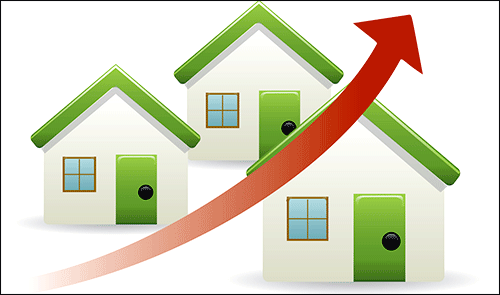DORAL, Fla. – Feb. 26, 2015 – Investment advisor NerdWallet recently compiled a list of the current top Florida cities for investors. To determine best potential and limited risk, NerdWallet writer Kamran Rosen offered this analysis:
Market health. We looked at how quickly houses sold compared with other cities in the state, as well as the change in vacancy rate.
Price per square foot. Weighting for affordability, we measured the price per square foot of housing in a city, averaging all months of 2013 and 2014 to avoid seasonal fluctuations.
Population and home price growth. Averaging monthly price data since 2004, we examined the percentage of houses that increased in value over the past 10 years. We also looked at the increase in population since 2010.
Property taxes. Using state data, we calculated the city and county property tax for each city.
In NerdWallet's study of 227 places, the cheapest average sale price was $37.36 per square foot in Kenneth City in Pinellas County. The most expensive was Key Biscayne at $546.77 per square foot, a difference of over $500.
General NerdWallet advice
Flip this. If your goal is to get in and get out with a profit, here are the top three communities when it comes to speed of sale: Hialeah Gardens, Lauderdale-by-the-Sea and Atlantis. Hialeah Gardens earned the highest mark, a 9.55, in our study on this metric – Zillow's 2014 market health score. The quicker a house sells, the higher the score, with 10 as the highest.
Beachfront bonus. The Miami-Fort Lauderdale metro area dominated our top 10 list – eight of our top 10 investments are located there.
Going long? Florida's housing market seems to make the most sense overall for those looking to invest long term. Most of our top 20 places have low scores when it comes to real estate market health, a sign of the continued impact of the Great Recession.
NerdWallet's best places to invest in Florida real estate
1. Doral
Doral tops our list thanks to its relative affordability, low unemployment rate (4.4 percent – over a full percentage point lower than the statewide rate) and strong population growth. This north-central Miami-Dade County city from 2010 to 2013 welcomed almost 6,000 new residents, a gain of more than 14 percent.
2. Bal Harbour
In tiny Bal Harbour, population 2,569, price could quickly become a factor – it's the most expensive location in our top 20 with an average sales price of $340 per square foot. Still, there are plenty of buyers. On Zillow's 0-10 scale for speed of sale, Bal Harbour scored a healthy 8.66.
3. Homestead
The watchword in Homestead is growth. More than half – 56 percent – of its homes have increased in value over the past 10 years, yet housing remains relatively affordable in this city of 61,714 residents. Sale prices over the past two years averaged just $79.42 per square foot, among the most affordable in our study.
4. Miami Lakes
Miami Lakes may not boast oceanfront property, but a full 57 percent of its housing stock has increased in value over the past 10 years, and vacancies have dropped 3.6 percent. That's a good sign for investors who may have to pay a premium for this suburban location just north of Miami. Here, buyers paid an average of $152 per square foot for a house.
5. Marianna
Bargains abound in Marianna, home of our top 20's lowest price-per-square-foot sale price of $61. It's also clearly attracting new residents, with a 28 percent increase in the population from 2010 to 2013.
6. Hialeah Gardens
Hialeah Gardens, population 22,136, had the highest overall market health score in our survey at 9.55. This means buyers who are looking for a quick turnaround on their investment will find many options to flip housing in Hialeah Gardens.
7. Aventura
This diverse and growing community in northeastern Miami-Dade County is known for its high concentration of transplants from the Northeast, and its many high-rise condos. Buyers will find an average sales price of $227 per square foot and options for Intracoastal Waterway and Atlantic Ocean views. The city's investment score also benefits from its 7.51 percent increase in population since 2010.
8. Pinecrest
This small suburban village in Miami-Dade County is the second-most expensive in our top 10, with a price of $269 per square foot. Its population has grown a modest 1.54 percent in recent years, and village leaders are thinking about expanding. A common discussion involves annexing land west of U.S. Highway 1 to help build out the small village's tax base.
9. Cape Coral
Cape Coral moves in many directions: It's the largest city in our top 10 at 158,415 residents, and it has an average sales price that is the third lowest in our top 10 at $96 per square foot. It's the only city on our list located in Lee County, which is also home to Fort Myers. Cape Coral residents are thinking about development, which can have a major effect on real estate values. Recent news reports have focused on plans to develop Bimini Basin as a community gathering place – with some ideas calling for a mix of commercial and open space.
10. Winter Garden
The only place in our top 10 near Orlando, Winter Garden has a lot to offer those diving into the real estate market. Its vacancy rate declined while its population grew over 13 percent, suggesting strong demand for housing. Perhaps it's the nearby Disney World effect, but Winter Garden enjoys a particularly strong job market, which supports a growing housing market. The unemployment rate in Winter Garden in December, the most-recent data available, was 3.8 percent. By comparison, the entire state of Florida was at 5.6 percent for the same month.
Source: Kamran Rosen with NerdWallet














